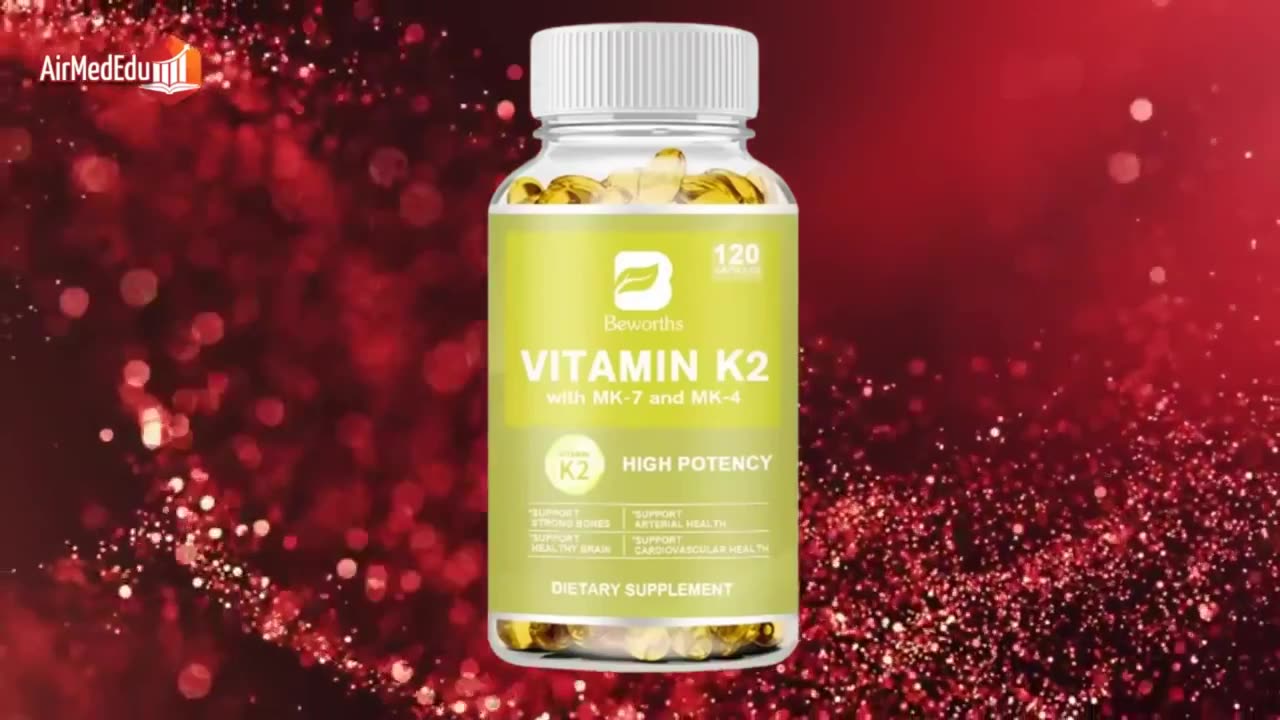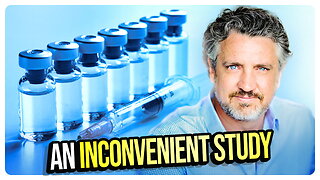Premium Only Content

Anticoagulants How do they work
Anticoagulants, those silent guardians of our circulatory system, represent one of the most fascinating and vital medical interventions in modern medicine. Imagine for a moment your blood as a mighty river that tirelessly courses through every corner of your body, carrying oxygen, nutrients, and life itself. Under normal conditions, this river flows with pinpoint precision, but sometimes factors such as prolonged immobility, recent surgery, or an irregular heartbeat can cause unexpected "dams" to form: blood clots that obstruct the passage and threaten to cause disasters such as heart attacks, strokes, or pulmonary embolisms. This is where anticoagulants come in—medications designed not to thin the blood, as their colloquial nickname "fluidizers" suggests, but to interrupt the delicate dance of coagulation, preventing those clots from forming or growing. Their history dates back to the 1920s, when heparin was discovered in dog livers. Since then, they have evolved to become indispensable allies for millions of people around the world, saving lives by keeping that river flowing freely and safely.
To understand how these drugs work, we must delve into the fascinating world of the coagulation cascade, a chain process where specialized proteins in the blood, known as clotting factors, are sequentially activated to form a meshwork that seals wounds and stops bleeding. Anticoagulants act as master switches in this chain, deactivating key steps so that the blood doesn't become too sticky. Take heparin, one of the pioneers in this family: this substance, administered by intravenous or subcutaneous injection, binds to a natural protein in the body called antithrombin, empowering it to block crucial enzymes such as thrombin and factor Xa, responsible for weaving the clot network. It's as if heparin sends a "stop" message to the messengers that propagate the clotting alarm, halting the process before it gets out of control. On the other hand, warfarin, a classic oral anticoagulant that has been the standard for decades, operates in a more subtle and strategic way: it interferes with vitamin K, an essential nutrient that the liver uses to activate several clotting factors (such as II, VII, IX, and X). By blocking this activation, warfarin reduces the blood's ability to form stable clots, but requires constant monitoring because its effect depends on diet and individual metabolism.
In the last two decades, direct oral anticoagulants, or DOACs, have emerged, representing a revolution in their surgical precision. These drugs, such as dabigatran, which directly inhibits thrombin, or apixaban and rivaroxaban, which bind to factor Xa without intermediaries, act more predictably and with fewer food interactions than warfarin. Imagine a team of specialists directly attacking the enemy general instead of cutting off its supply lines: that's what DOACs do, offering faster and more stable control of thrombotic risk. Essentially, all these mechanisms converge on a common goal: maintaining the body's hemostatic balance, where blood clots just enough to heal a cut finger, but not so much as to block a vital artery. Their effect on the body is profound and multifaceted; not only do they prevent the formation of new clots, but in some cases, as with low-molecular-weight heparin, they can even help dissolve existing blood clots by boosting natural fibrinolysis mechanisms. In the bloodstream, this results in improved fluidity that ensures oxygen reaches tissues uninterrupted, protecting organs such as the heart, brain, and lungs from ischemic asphyxiation.
The use of anticoagulants is as varied as the threats they combat, adapting to a wide range of clinical scenarios where the risk of thrombosis lurks. In patients with atrial fibrillation, a heart rhythm disorder that causes the atria to quiver ineffectively and promote the formation of clots within them, these drugs are prescribed to prevent a thrombus fragment from traveling to the brain and causing a devastating stroke. In fact, in people with this condition, the risk of a stroke can be reduced by up to 60–70% with proper use. After major surgeries, such as hip or knee replacements, where postoperative immobility invites clots in the deep veins of the legs—known as deep vein thrombosis—a prophylactic dose of heparin or enoxaparin can be the shield that prevents those clots from migrating to the lungs in the form of pulmonary embolism, a potentially fatal complication. In the cardiovascular field, they are used in people with artificial heart valves or a history of heart attack, where turbulent blood flow around mechanical prostheses accelerates clotting. Even in genetic disorders such as thrombophilia or antiphospholipid syndrome, where the body tends to hypercoagulate, anticoagulants offer chronic therapy that allows for a normal life, free from the constant spectrum of thrombotic events. Their versatility extends to acute situations, such as intensive care for patients with sepsis or severe COVID-19, where systemic inflammation unleashes a storm of microscopic clots that clog capillaries and worsen organ failure.
The benefits of these drugs go beyond mere prevention; they are catalysts for quality of life and longevity. By keeping vascular pathways clear, they not only prevent immediate catastrophes such as acute myocardial infarction or massive embolism, but also reduce the cumulative burden of chronic ischemic damage, such as vascular dementia or progressive heart failure. For a patient with atrial fibrillation, for example, daily use of a DOAC such as edoxaban can mean the difference between an active old age and one marked by irreversible neurological sequelae. Large studies have shown that these treatments reduce the incidence of thrombotic events by 50–80%, depending on the context, and for many, they allow them to confidently resume everyday activities: traveling by plane without fear of thrombosis, or undergoing dental procedures without the fear of uncontrollable bleeding. Beyond the statistics, there is an intangible benefit: peace of mind. Knowing that a small tablet a day is monitoring the invisible flow of blood provides a sense of control in a world where cardiovascular disease remains the leading cause of death globally. However, these guardians are not infallible; their double-edged sword is that, by inhibiting clotting, they also increase the propensity to bleed, a reminder that biological balance is a delicate art that medicine imitates but never fully perfects.
Speaking of balance, the correct dose of an anticoagulant is a personalized puzzle, calibrated with a watchmaker's precision to maximize benefits while minimizing risks. There is no one-size-fits-all; everything depends on the type of drug, the underlying condition, age, weight, kidney and liver function, and even the patient's genetics. For warfarin, the classic vitamin K antagonist, starting doses typically range between 2 and 5 milligrams per day, gradually titrated through laboratory tests that measure the International Prothrombin Time (INR), a ratio that ideally should be kept between 2 and 3 for most indications—too low and clots persist, too high and the risk of bleeding skyrockets. This frequent monitoring, sometimes weekly at first, is the price of their proven efficacy, but it has led many to prefer DOACs for their simplicity. Apixaban, for example, is typically administered at 5 milligrams twice daily for attack prevention in atrial fibrillation, reducing to 2.5 milligrams in patients over 80 years of age or with low body weight.
Rivaroxaban, another factor Xa inhibitor, is administered at 20 milligrams once daily with dinner, decreasing to 15 milligrams if there is kidney failure. Non-anticoagulant heparin, used in hospital settings, is dosed by weight—approximately 80 units per kilogram as a continuous infusion—and requires constant monitoring of platelets and clotting times. In all cases, the physician starts with a conservative dose, titrates based on individual response, and, once stabilized, prescribes a fixed regimen that can last for months, years, or even a lifetime. The mantra is clear: never self-medicate or alter doses without consultation, as a minimal deviation can tip the balance toward danger.
But no medication is a perfect elixir, and anticoagulants are no exception; their side effects, although manageable in most cases, demand eternal vigilance. The most feared and common is excessive bleeding, which can manifest as unexplained bruising, gums that bleed when brushing, or in severe cases, internal gastrointestinal or cerebral hemorrhages requiring urgent intervention. Approximately 75% of warfarin users and nearly 50% of those on DOACs experience some minor bleeding episodes, but the risk is compounded by factors such as advanced age, uncontrolled hypertension, or concomitant aspirin use. Warfarin, in particular, can cause skin necrosis in rare cases of protein C deficiency, or "blue finger" syndrome due to paradoxical microclots. Heparin carries its own spectrum: heparin-induced thrombocytopenia (HIT), an immune reaction that paradoxically promotes massive thrombosis in 1-5% of long-term users, or even osteoporosis with chronic use exceeding one month. DOACs, although safer in terms of monitoring, are not immune to nausea, indigestion, or, in the case of dabigatran, a higher incidence of gastrointestinal bleeding. These effects are not inevitable; with regular monitoring—such as INR testing for warfarin or quarterly visits for DOACs—and timely adjustments, most are mitigated. Still, symptoms such as blood in the urine, black stools, or sudden weakness require immediate attention, reminding us that these drugs, by altering a vital process, demand respect and responsibility.
Taking anticoagulants correctly is a daily ritual that, once internalized, becomes a protective habit, but requires discipline to avoid stumbling blocks. Most come in oral form—tablets or capsules—taken once or twice a day, always with a sip of water to facilitate passage to the stomach. Rivaroxaban, for example, should be taken with food to optimize absorption, while apixaban or dabigatran work well with or without food, although scheduling consistency is key to maintaining stable blood levels. Warfarin, sensitive to vitamin K fluctuations, requires a balanced diet without excess spinach or broccoli—rich in vitamin K—which could counteract its effect, or alcohol abuse, which could increase its risk. If you miss a dose, the rules vary: for warfarin, take it as soon as you remember, unless it's almost time for the next one, in which case skip it and don't double up; for apixaban or dabigatran (twice daily), do so if there are more than six hours until the next one, otherwise skip it; rivaroxaban allows for catch-up if there are more than twelve hours left, but edoxaban is strict—only if the entire day hasn't passed. In the event of an accidental overdose, panic isn't helpful: contact emergency services immediately, as the risk of bleeding escalates rapidly. For heparin injections, the technique is meticulous—subcutaneously in the abdomen, rotating sites to avoid irritation—and is often taught in specialized clinics. Complement this with proactive habits: wear a medical alert bracelet, inform dentists or surgeons before procedures, and avoid contact sports or herbs like ginkgo that increase bleeding. Thus, what begins as an obligation transforms into empowerment, a conscious pact with your own body.
Ultimately, blood thinners encapsulate the paradox of contemporary medicine: interventions that save by interfering, that protect by exposing vulnerabilities. Their adoption has transformed bleak prognoses into hopeful trajectories, allowing patients to navigate old age with renewed vitality or surgery survivors to reclaim their autonomy. But their success lies in collaboration: between the patient who adheres to the regimen, the physician who diligently monitors, and the scientific advancement that refines formulas. If you are considering or already using these drugs, remember that they are not a magic cure, but a partner in managing the risks inherent to the human condition. Always consult your healthcare professional for a tailored plan, and allow this knowledge to arm you with confidence. At the end of the day, in the vast river of circulation, an uninterrupted flow is the most eloquent tribute to life itself.
-

vivafrei
9 hours agoAn Inconvenient Study: Live with Del Bigtree! FBI "Fast Response" Fact Checked! Megyn Kelly & MORE!
76.1K31 -
 1:35:03
1:35:03
Russell Brand
4 hours agoDemocrats Drop Epstein Emails — All About Trump - SF650
65K32 -
 LIVE
LIVE
Nerdrotic
3 hours ago $4.82 earnedBBC Crashout | Hollywood For Sale | Battle of the Blonde's | Witcher BOMBS - Friday Night Tights 380
1,350 watching -
 14:26
14:26
Upper Echelon Gamers
4 hours ago $0.39 earnedThe Carvana Scam - A Predatory BUBBLE
3.66K3 -
 LIVE
LIVE
LFA TV
21 hours agoLIVE & BREAKING NEWS! | FRIDAY 11/14/25
871 watching -
 LIVE
LIVE
Dr Disrespect
7 hours ago🔴LIVE - DR DISRESPECT - BLACK OPS 7 - LAUNCH DAY CHAMPION
1,059 watching -

StoneMountain64
5 hours agoCall of Duty Black Ops 7 Gameplay LAUNCH DAY
34.8K -
 18:15
18:15
Clintonjaws
6 hours ago $6.01 earnedCNN Audience Shocked By Dem's Slanderous Comments At Trump
32.5K20 -
![MAHA News [11.14] - Govt War on Small Ranchers, GLP-1 Craze, Hemp Ban, Mercury out of Vaccines](https://1a-1791.com/video/fww1/f2/s8/1/i/X/E/z/iXEzz.0kob-small-MAHA-News-11.14.jpg) 1:23:00
1:23:00
Badlands Media
13 hours agoMAHA News [11.14] - Govt War on Small Ranchers, GLP-1 Craze, Hemp Ban, Mercury out of Vaccines
19.9K3 -
 1:23:17
1:23:17
The Quartering
6 hours agoTucker Reveals FBI Coverup For Trump Assassin, Walmart CEO Quits & Tim Pool Unleashes
63.2K65